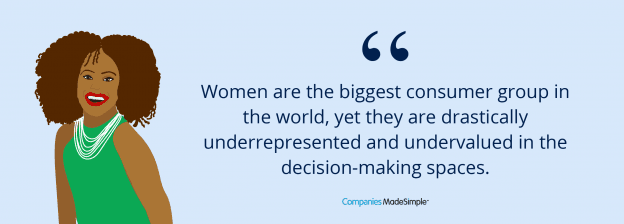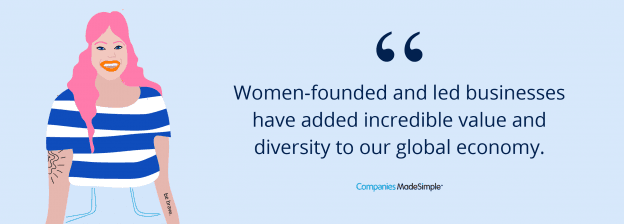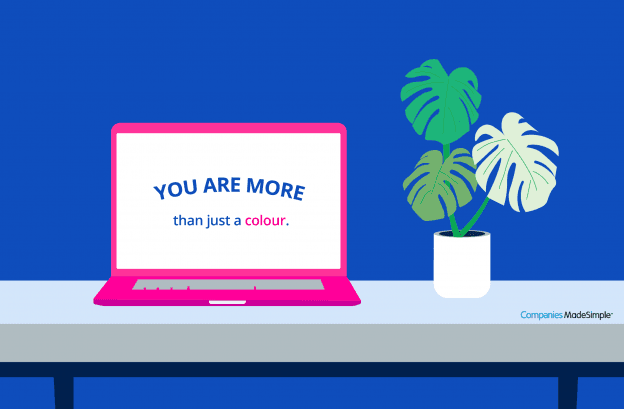Search ideas, news and case studies
Blog Categories
Women in Business Series: Introduction

Welcome to our series: Women in Business. Over the month of August, our four-part blog series will be delving into the current business environment and the state of female entrepreneurship. Examining the current landscape of female entrepreneurship and the challenges and setbacks faced by women who want to start their own ventures.
The story so far: Women-owned businesses are growing, but slowly.
If women matched men in starting businesses, the UK economy could grow by £250 billion, reports The Rose Review of Female Entrepreneurship, a government-backed, independent review of female entrepreneurship in the UK. When the report was published 1 in 3 UK entrepreneurs were women, due to the report both the government and independent organisations announced their ambitions to support and nurture female entrepreneurship.
Fast forward a few years later to 2023. Women continue to show promise, passion, and the skills for entrepreneurship to match their male counterparts, yet men are still starting more businesses than women. Recent events have affected female entrepreneurs harder than men. For example, due to the pandemic, the total number of self-employed women fell, as a result in 2023, only 30% of small businesses are run by women.
Has there really been no growth in female entrepreneurship?
The Rose Review’s latest findings in 2022, show that women-owned businesses have increased by 4.36% in 2022. Since 2019, when the first review launched, there are more than twice as many female-led business incorporations, suggesting that things are changing even if at a slower pace. There are more women-owned and led businesses than ever and more enthusiasm for inspiring women to start their own businesses. Over the last few years, we can see the positive impact of studies and commitments towards this future. Thanks to the Rose Review and other organisations the tide is beginning to turn.
This small, but positive (and heartening) rise, suggests that things are changing even if at a slower than hoped-for pace. We could argue that we have not seen more progress because of the systemic issues, cultural flaws or simply chalk it up to times of economic uncertainty and downturns. We could even pose the counter-argument that economically uncertain times fosters a growth of innovative businesses causing that rise.
All in all, women-owned businesses are on the rise but if we hope to close that gender gap sooner than the currently estimated 131 years, we will require a bigger push for change.
This series aims to examine the challenges that female entrepreneurs face when starting a new venture and why they continue to exist. Systemic change is important and needed but will take a long time and the wait is frustrating. Therefore, while the series will highlight where systemic change is needed, it will also present some practicable suggestions which could be implemented, in order to inform and inspire aspiring female entrepreneurs. Women are capable of being successful, resilient and impressive entrepreneurs which it is necessary to address the challenges faced by women entrepreneurs.
The benefits of having more women entrepreneurs
Economic benefits of female entrepreneurship
Small to medium enterprises (SMEs) are the backbone of the UK economy, with over 95% of private sector businesses in the UK being classified as an SMEs. However, only a small number (30%) of those businesses are run by women. If women created businesses at the same rate as men the economic benefits would be tenfold. The Rose Review argues that it represents an additional £2.8 billion boost to the UK economy.
Essentially, when more women work, economies grow which benefits everyone. A larger supply of capital in the economy results in more job opportunities, an increase in wages, lower interest rates and more money spent, which creates more jobs and so on and on. Women-led and owned businesses also diversify the economy. A diversified economy helps support multiple businesses, for example, an office may require a cleaning business, or an office supply business to support their operations. Essentially, it creates a cycle of sustainable economic activity. Secondly, a diversified economy also creates innovation through competition and an exchange of ideas both within industries and outside of industries.
Social benefits of female entrepreneurship
However, encouraging women to start their own ventures goes beyond money and economics. There are also multiple social benefits which emerge when we see women in leadership and ownership positions. Research shows that women-owned businesses tend to be more diverse, innovative and socially responsible than male-owned ventures. UN Women estimates that companies with three or more women in senior positions score higher in all dimensions of organisational performance, from company culture to internal progression to conflict resolution.
Women are more risk-averse and cautious; they prefer to be informed before leaping into things, these practices in business result in resilient and fast-growing companies. In fact, most women-led enterprises are labelled ‘high risk’ by banks and venture capitalists but tend to perform better economically and culturally than their counterparts. When creating their own businesses women may spend more time calculating risks, which means their businesses may be better equipped to handle times of uncertainty.
But owning a business may also mean leading a business, particularly when you start small. In recent years we’ve seen how women-led businesses also tend to follow their own structures and patterns. Women tend to lead from a place of experience and empathy. Experience-led leadership and ownership means these companies are more likely to adopt ‘unorthodox’ working styles, such as flexible hours, hybrid weeks, childcare provisions and more. This results in a positive company culture which in turn drives productivity and innovation.
For example, Jo Hunter, founder and CEO of 64 Million Artists adopted a 4-day work week and the month of August off for all staff. This radical approach to work was in response to the post-pandemic burn-out that Hunter and her staff experienced. Hunter claims that it allowed her staff to get some ‘much needed reflection’ and her company benefited with an income increase of almost 50%. Of course, this isn’t applicable or practical to every industry or company, but Jo Hunter demonstrated the kind of risks women leaders are willing to adopt to transform their businesses.
Hunter built her ‘unorthodox’ approach to work by putting her staff at the centre, and listening to them. This is an example of how women tend to have more ‘soft’ leadership skills, such as empathy, multitasking and patience due to how women are socialised, i.e. told to be listeners, told to be problem solvers, told to be ‘caring’. This, of course, is not to be overly prescriptive of women, but a general trend seen amongst women in senior roles. Therefore, it can be argued that women-owned and led businesses can be highly beneficial to cultivating a new type of working environment, one craved by post-pandemic workers.
The world of work has changed dramatically over the last three years, workers are prioritising their mental health, time and selfhood more. Recently, there is data to prove that companies that retain ‘unorthodox’ working styles are growing quicker and those who remain firmly in ‘traditional’ working styles are not. This can suggest that women entrepreneurs who lean into empathy-based leadership can cultivate the same growth and foster a new type of workforce which may drive modernisation and development.
A gap in the market: The Female Economy
Harvard Business Review dubbed ‘The Female Economy’, where it shows that women, as a consumer group, have overtaken the emerging markets of China and India. Meaning that women are the biggest consumer group globally, they hold a huge amount of buying power. Despite this amount of buying power women hold, ‘The Female Economy’ is not being catered to appropriately. Women drive the world’s economy, as a business it would be absurd to ignore that and yet, so many businesses do. This power creates a demand for useful products and services for women, something which has not always been in existence. For example, we’ve seen big brands create pink versions of common items (see Bic pens for her, Dell computers etc) as a response to ‘The Female Economy’. These brands think they are catering to a female audience when in fact these products come across as infantilising and extortionate (see Pink Tax).

What ‘The Female Economy’ actually demands are items and services for women that are innovative, useful and made from experience. Not poorly conceived products and services that feed into and are based on outdated, and frankly offensive, stereotypes. All these half-baked ideas of ‘making it pink’ products and services do show us that these companies do not have a single woman involved in the decision-making process. There are many examples of how popular and common products and services fail to accommodate women. From most smartphones being too big for female hands (and pockets), to city planning issues where pavements are too small to accommodate pushchairs. It is clear that a lack of female perspective in addition to using data which has been informed by research on men, by men i.e. crash test dummies, has caused a rift in accurately catering for women consumers or providing them with a product that is made with women in mind.
However, women entrepreneurs already have the upper hand when catering to ‘The Female Economy’.
For example, mum Emma Cattell, owner of ‘Bobbin and Bumble’ identified a gap in the market when feeding her baby. She realised that most high chair covers are made from fabrics which are easily stained and are generally unfashionable. After some research, Cattell created her own oil cloth baby chair covers for the affordable IKEA highchair. After seeing interest in the covers on social media, she began her business selling baby chair covers purpose-made for the IKEA highchair. This is the sort of innovation that ‘The Female Economy’ responds to. Women consumers respond to products like this because it considers their needs and desires, they need a stain-proof baby chair cover, and they desire one that looks aesthetic. Cattell knew this because it was her needs and desires too. From following her instinct she became the owner of a successful business.
Women are not looking for pink versions of existing products, but products and services which are doing something useful and different. It can be argued that these innovations can only be created through experience, through understanding needs and desires. In a predominantly male environment a minority voice, such as a woman, can (and usually will) offer an alternative experience and voice. Therefore, female-owned businesses may have a natural advantage- where most global companies are still learning how to sell to women, women entrepreneurs may already have the right product or service ready to go without paying millions in R&D.
Women are the biggest consumer group in the world, yet they are drastically underrepresented and undervalued in the decision-making spaces. How do we change this? Technically, it’s simple (enough) more women have to swallow their doubts and start their own ventures.
The current landscape for women
Of course, we need to discuss the broader issues which stop women from entering their own ventures. It can be argued that the global society promotes male privilege, in other words, society tends to be male-dominated, male-centred and male-identified. Men are more favoured for leadership positions both in the public and private spheres whereas women are assigned to secondary roles which aid men. These roles are often domestic, women are still expected to be supportive of men and their role in society over being encouraged to take roles with more power and control. This may seem like an old-fashioned attitude to most of us, however, only in June 2023 the UN reported that 9 out of 10 people are still biased against women. That is 90% of people believe women are not capable of taking leading roles in politics, law, healthcare or business. This attitude results in real barriers for women in every aspect of life. Something which can be defined as a ‘systemic issue’ as it’s caused by a system which privileges men. Systemic issues are largely responsible for the inequalities of numbers between men and women business owners and a true strive towards levelling the playing field would require a mass of changes, including changes in attitudes for a huge number of the population. After all, any system created by people can be dismantled by people, but it requires a desire for change.
When people are raised in a society as such it has a direct effect on work and economics. For example, according to UN Women, globally women are still less likely to participate in the labour market due to systemic issues. The UN reports that even when women participate in the labour market, due to gender bias, women are paid less, women have less access to financial institutions or banks, and women still face violence and harassment in work at a disproportionate rate. This not only discourages women from participating in the labour market but also isolates those within it. It also suggests that women are less valued in the world of work, therefore work created by women, such as women-owned businesses, have less value. We know this is simply not true, there are a number of women-founded and led businesses which have added incredible value and diversity to our global economy. For example, Ruth Handler who created mega icon Barbie, Estee Lauder who invented the world-famous Estee Lauder skincare and makeup brand, and Kiran Mazumdar-Shaw whose company is the largest producer of insulin in Asia.
Women are making an impact globally despite facing barriers. However, the visibility of these role models remains low and the barriers for everyday women may still feel unconquerable.
Addressing these barriers within may look like closing the gender pay gap quicker, funnelling more money towards encouraging young ladies into business and leadership routes, a frank look at the distribution of domestic labour and addressing the impact of things like childcare costs, and flexible working hours. Each of these ‘solutions’ also differs from society to society, culture to culture and within different industries too.

Another effect of a male-privileged society is the issue of socialisation and empowerment. Consciously or unconsciously, from a young age girls may be pushed towards career paths which are perceived to be more feminine for example teaching, or nursing over pursuing career paths perceived as more masculine like entrepreneurship. As mentioned above, in a male-privileged society women are still expected to inhabit secondary roles where they can focus more on domestic duties to support men. Women, therefore, are encouraged to think about professions where they can balance domestic duties alongside a career. Or expected to give up their careers when it’s time to have a family, in order to let their (male) partners succeed in their roles. When this kind of socialisation is coupled with a lack of visible role models (81% of young people can’t name one female entrepreneur), it can transpire into a lack of confidence when women consider starting their own businesses. Women simply don’t feel encouraged by society or themselves to pursue entrepreneurship.
Of course, the tide is turning, particularly in the UK there are organisations and educational institutes encouraging young girls to focus on building empowerment, the Rose Review is one example out of many. However, there is still work to be done. Empowerment and confidence can come from within but when society favours one particular social group, they are empowered externally too. In itself, empowerment is a varied issue and in order to unpack it completely we’ve dedicated a blog solely to the topic of empowerment, to come next.
What can be done to change the landscape?
Systemic change is complex, multi-faceted and an unpopular option. It would also require years of legal and regulatory changes to undo certain policies and rules we have globally. It also requires an unpicking of every single culture, law, industry and attitude both locally and globally . This has been a challenge faced by women and other minority groups for years. While it is important to demand systemic change in order to trail a path for the future, women entrepreneurs today can make some personal and professional changes which can bring them closer to owning their own ventures. After all, overcoming challenges faced by female entrepreneurs will only improve the path for the future, therefore, it is important to take the leap and start.
The focus of our series ‘Women in Business’
Many existing organisations are fixed on reaching the same goal of encouraging women’s entrepreneurship, and due to this, there has already been an improvement in bridging the gap. But more can always be done in the strive for equity within the business world. For that reason, this series will work towards offering possible solutions to encourage women to take a step toward becoming female entrepreneurs.
Women entrepreneurs claim that a lack of empowerment, funding and time were the biggest challenges they faced, as evidenced in the Rose Review. Over this month, our four-part series will cover these three main setbacks and look at ways to approach and address them. The next blog will focus on empowerment, and exploring why female entrepreneurs face a lack of empowerment and how they can overcome it.







